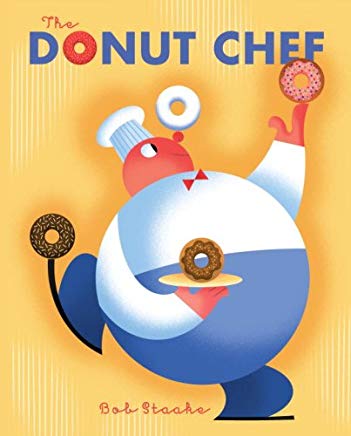The Blog
Blog Entry
Up Sprouted a Seed

Remember Little Golden Books? They’re still around. Well, sort of: minus the familiar gold and black spine that you probably associate with Scuffy the Tugboat, and a couple of acquisitions and rebrandings later (they’re owned by Random House now, which is owned by Bertelsmann, which was churning out Nazi propaganda back around the time the Poky Little Puppy was finding his mojo), yet there are anyway still traces of the original genetic material defining Bob Staake’s The Red Lemon, published only five years ago, even if it looks like it has been around for the last sixty.
Random House even likes to refer to this book as one of its “Golden Classics,” and while you have to admire the commitment this will presumably require for the next forty or fifty years, there is nevertheless something undeniably bold, even new, about the illustrations which accompany this timeless, simple fable. Coincidentally or not, the red lemon of the title is a sort of mutant growing among millions of the usual – and beloved – suspects. Fully the first half of this book concerns itself with nothing other than just how beloved these are: tangy, not mellow – and yellow! Perfect for pies and the Fourth of July! Old Farmer McPhee’s enthusiasm for the fruits of his labor – heck, even the labor of his labor – remains palpable, and would probably constitute reason enough to enjoy this, even were it not for his subsequent outrage at nature for having interrupted these reveries with something so florid, so flagrant, so… rude! Talk about seeing red: the trees, the ground, even the sky turn a menacing hue. Splutters the farmer, with a jingoistic fervor recognizable in any era:
“When people bite into a
fruit that they chew,
they count on it being
the right-colored hue!”
No matter: the bewildering citrus is forcefully exiled to a neighboring island, where this starts to read like a happy ending to The Lorax that Dr. Seuss never got around to completing. Two hundred years go by, and oh baby oh, how that island does grow. Indeed it becomes kind of a tourist destination, complete with its own airline (Air Red), live entertainment venue (Citrusagogo), discotheque (The Bitter End) and even a McPhee Memorial Building (alas, his old lemon orchard is now nothing but weeds). This is the fine print, however, between all of Staake’s riveting geometry – unforgettable circles, yes (Farmer McPhee is almost nothing else), but Seussian overpasses as well, and buildings as parallelograms, crescent moon-shaped clouds, leaning, gargantuan ocean liners, and those crimson, luscious lemons which seem to inform the shape and color of everything else.
A lot of reviews of this book (and Staake’s The Donut Chef and most of the work of J. Otto Seibold) like to point out that such images are “computer-enhanced,” but I think this is often an ungenerous note, because so what? It’s not like we’re measuring these stories for a wall at the Metropolitan Museum.
Those Little Golden Books from the 1940’s achieved their sliver of cultural relevance from a certain kind of modesty, I think. They were cheap (25 cents), small, sturdy and widely available for purchase in department stores and grocery marts – the places people went when they weren’t necessarily searching for enlightenment. I don’t know where we go from here – in two hundred years or so the picture book landscape may be nothing but weeds – though now seems like a pretty unlikely time to want to turn up our noses at anything that looks a little bit different.



